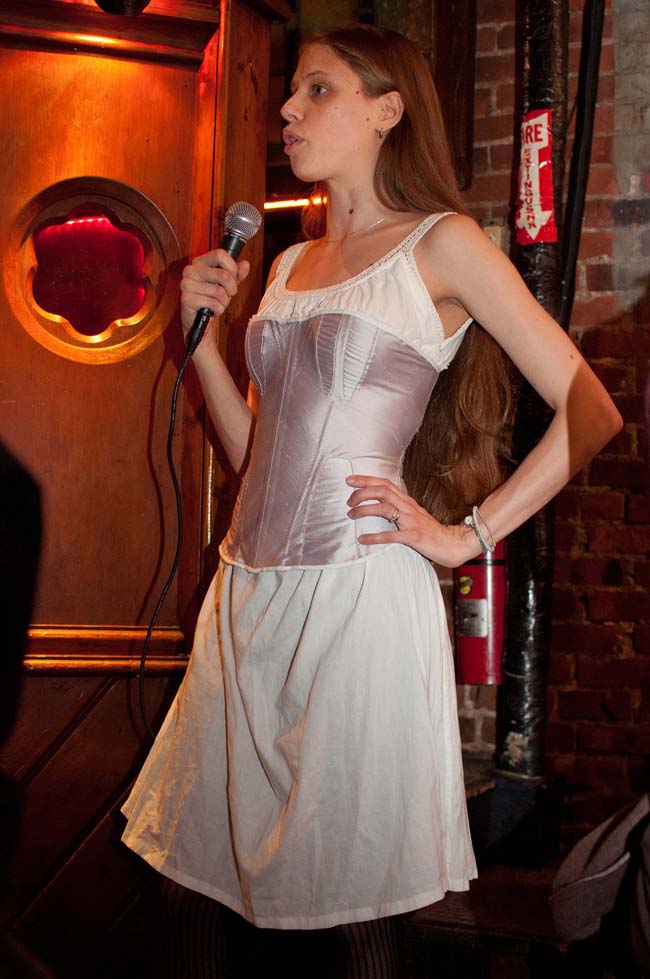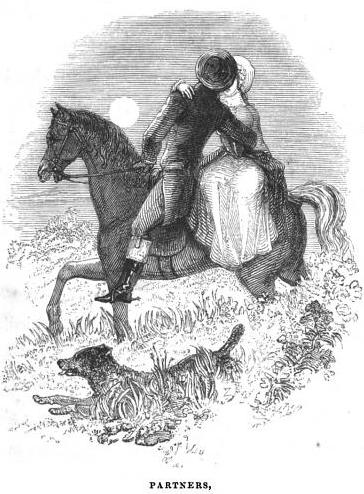Corset Report
November 17th, 2011
I’ve been neglecting my blog lately. But I have some good excuses. And this is one of them.
On Wednesday, November 9, I took part in CINCHED: Historic Corsets & Modern Corsetieres. It was a production of the New York Nineteenth Century Society, with six corset makers, one master of ceremonies, one very efficient organizer, and an audience of more than 60 delightful (and hopefully delighted) onlookers. We each took turns, in chronological order from 18th through early 20th centuries, describing corsets that we’d made and detailing their historical backgrounds.

In addition to helping organize the event, held at Swift Hibernian Lounge (our favorite local bar), I also hand sewed a nearly perfect version of the 1855/57 corset. In purple silk!! Okay, I know purple silk isn’t historically accurate. Though I did find a very similar mid-century corset in white silk. I just couldn’t resist that purple. And it was wonderful to work with after six versions made from canvas duck. The fit is getting so close. In fact, I think I may have cracked the code with a new shape in the side seam — more on that later. For now, it just needs a few tweaks (mostly adding the extra half inch I shaved from the hip at the side seam into the stomach gore) and it will be a very wearable garment.

I guess the back needs a little work too, smoothing the remaining puckers. But it’s still close. Best part about wearing this at the event? One of the other corsetieres, and a professional designer, gave me some tips on making the gores fit better!
And yes, that’s me, parading around in my underwear in a bar. Again.
Photographs courtesy of Nidal Nasr, who generously volunteered his time and talent to document the event.
Whist
March 27th, 2011
In preparation for tomorrow’s General Meeting of the New York Nineteenth Century Society, I have been reading up on the game of Whist. According to Whist: its history and practice, by “an amateur,” published in London, 1844, the game finds its roots in a 17th century game (reportedly played by Jonathan Swift and his fellow bishops) called Whisk & Swabbers.
By the 19th century, Whist had become a drawing room staple. Gentlefolk spent hours taking tricks, memorizing cards, and exchanging small stakes over the green baize of the card table. Played with a standard deck of cards, Whist requires four players, in two partnerships. In many ways, it is quite similar to Bridge. But of course, being 19th century, the imagery is much more pleasant.
Here, for example, is a representation of the whist partnership (as illustrated in the aforementioned book):

They hardly look as though they are playing cards, do they?
Waffle Party
December 28th, 2010
As ever, when I end up with leftover yams, I’ve been making waffles. I use a delicious recipe for golden yam waffles from that modern compendium, The Joy of Cooking. This morning I’ve made a double batch (thanks to my new enormous glass mixing bowl). After eating our fill, the remainder are bound for the freezer; there will be enough to sustain our waffle cravings for some time!
Waffles are not only tasty however — they are a New York tradition, going back to the Dutch founders, and pleasantly continued throughout the 19th century in the quaint form of ‘waffle parties.’ Read on…

